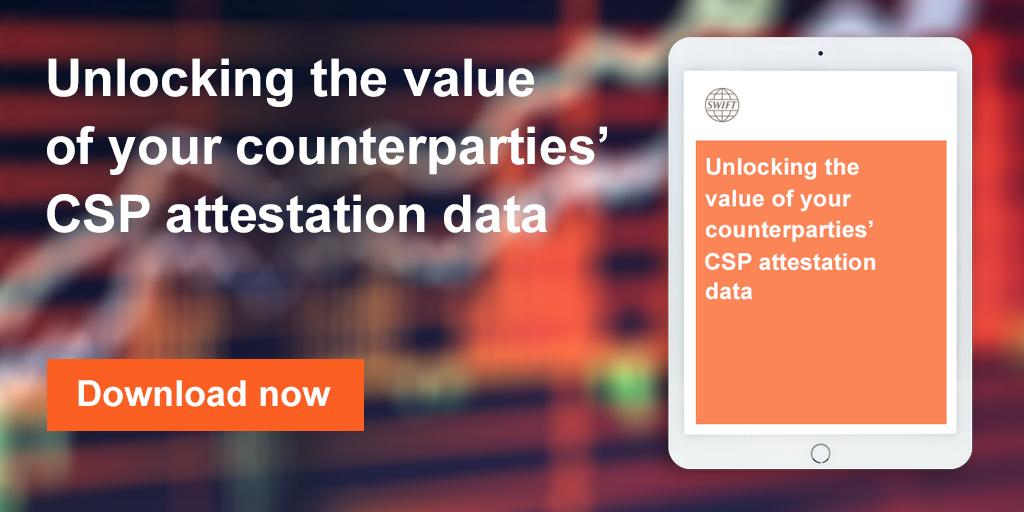Download our new ebook to learn how you can strengthen your cybersecurity using counterparty attestation data from Swift’s Customer Security Programme.
Cybercrime continues to be a major challenge for financial institutions – so it’s essential to understand the risks associated with your counterparties. And this means making the best possible use of all the data available to you.
One valuable data source is Swift’s Customer Security Programme (CSP). As well as attesting to your own security controls, you can also use the programme to request your counterparties’ attestation data – and this, in turn, can provide an additional data point to help you manage counterparty risk.
Learn from leading institutions
Leading financial institutions have taken the initiative and are now using CSP attestation data to gain more insights into their counterparties.
In our new ebook, Unlocking the value of your counterparties’ CSP attestation data, these early adopters – from Bank of America, BNY Mellon, Citi, Deutsche Bank, Lloyds Bank and Standard Bank –share some of the insights they have gained, and reveal key success factors that can help your institution tap into this data as well.
Getting started
First and foremost, you need to have the right processes in place to collect and assess the data. As the ebook explains, there are different ways of approaching this task. For example, some banks request attestation data from all their counterparties, while others focus on specific groups.
It’s also important to consider what to do if your counterparties don’t meet all the CSP controls. Some banks opt to work with counterparties and track their progress in adopting any missing controls. Others, however, may draw a line in the sand and decide against onboarding counterparties that don’t comply with all mandatory controls. Different actions may be needed if your counterparties’ attestations have expired, or if they are unwilling to share their data.
And, of course, you need to know how to use your counterparties’ attestation data effectively. The ebook discusses some of the ways leading banks are using the data to manage counterparty risk – such as incorporating it into their existing risk frameworks, or checking counterparties’ CSP scores for weaknesses in response to negative news.
Success factors
Banks that have already embarked on this journey have gleaned plenty of insights along the way. In the ebook, they identify the key success factors that can help you get the most out of your counterparties’ attestation data:
- Methodology – Learn to identify which CSP controls to focus on, and whether you should prioritise a particular group of counterparties or opt for a broader approach.
- Resources – Find out which stakeholders you should include in the project, and whether any external resources may be needed.
- Communication – Read tips on how to share information about the CSP programme internally and engage with your counterparties about the programme.
- Tools and processes – Read about the different ways you can review attestation data, from spreadsheets and slides to internally developed tools.
- Community – Discover how meeting with peers and sharing information can help you make the most of your attestation data.
Download the ebook
As the early adopters explain, CSP attestation data is not a silver bullet – but it is nevertheless a valuable data source that can help you manage counterparty risk more effectively in today’s risky environment.
Download our ebook to find out more.



